Lepper, Harry Joshua
Died 1944-10-23
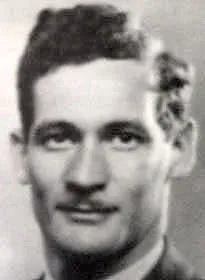

Birth Date: 1915
Born:
Son of Charles and Mabel Lepper, of Port Arthur, Ontario.
Home: Port Arthur, Ontario
Enlistment:
Enlistment Date: Unknown
Service
RCAF
Unit
422 Sqn- Squadron
This Arm Shall Do It
Base
Rank
Warrant Officer 2nd Class
Position
Warrant Officer 2nd Class
Service Numbers
R/51509
Home
 Port Arthur, Ontario
Port Arthur, Ontario
422 Sqn This Arm Shall Do It ("Flying Yachtsmen")
History of the Squadron during World War II (Aircraft: Lerwick I, Catalina IB, III, VB, Sunderland III, Liberator VI, VIII)
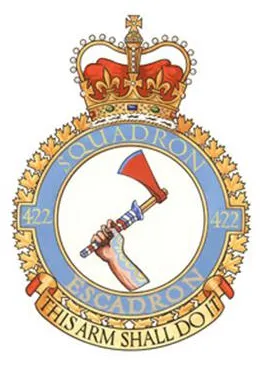
No. 422 (General Reconnaissance) Squadron was the 19th RCAF squadron formed overseas in WWII. It was the 5th Coastal squadron, and was formed at Lough Erne, Fermanagh, Northern Ireland  on April 2, 1942. It flew Consolidated Catalina and Short Sunderland flying boats on convoy support and anti-submarine patrols over the North Atlantic shipping routes. When hostilities ended in Europe, the squadron was re-designated a Transport (T) unit and was converting to Consolidated Liberator aircraft when hostilities terminated in the Far East. The squadron was then disbanded at Bassingbourn, Cambridgeshire, England
on April 2, 1942. It flew Consolidated Catalina and Short Sunderland flying boats on convoy support and anti-submarine patrols over the North Atlantic shipping routes. When hostilities ended in Europe, the squadron was re-designated a Transport (T) unit and was converting to Consolidated Liberator aircraft when hostilities terminated in the Far East. The squadron was then disbanded at Bassingbourn, Cambridgeshire, England  on September 3, 1945.
on September 3, 1945.
In the course of its operations, the squadron flew 1116 operational sorties for the loss of 9 aircraft and 70 aircrew, of whom 11 were killed, 31 presumed dead, 6 injured and 22 rescued. The squadron is credited with 1 U-boat (U-625), sunk by the crew of Sunderland EK591 from St. Angelo. Ireland on 10 March 1940. The captain, WO2 W.F. Morton, was on his first operation. Awards to squadron members were 1 OBE, 1 MBE, 6 DFCs,1 BEM, 1 Air Medal (USA) and 22 MiD. Battle Honours were: Atlantic 1942-45, English Channel and North Sea 1944-45, Normandy 1944, Biscay 1944-45, Arctic 1942.
Maps for Movements of 422 Squadron 1942-45
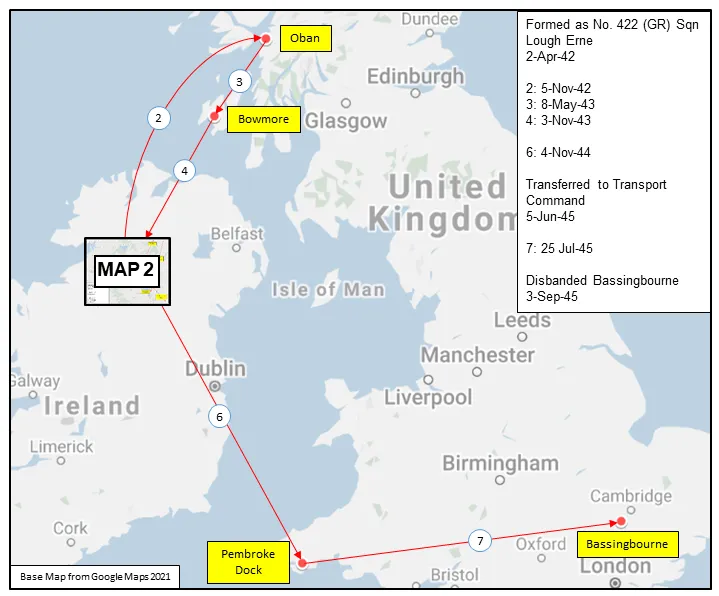 | 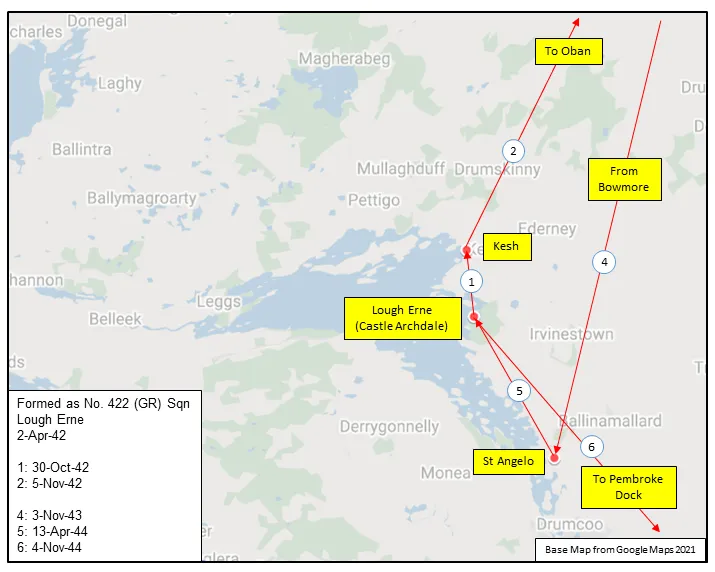 |
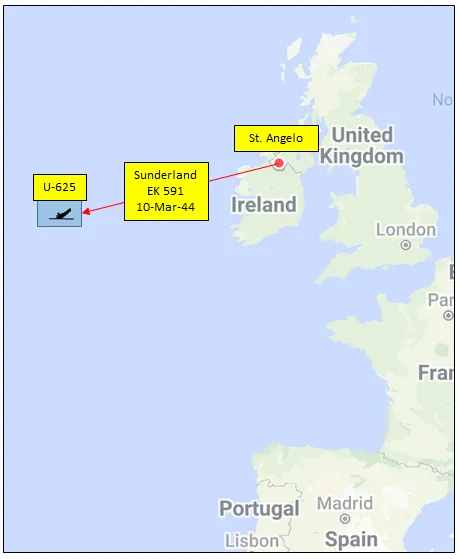
 422 Squadron in the Battle of the Atlantic (RCAF Museum)
422 Squadron in the Battle of the Atlantic (RCAF Museum)
422 Squadron History Summary 1942-45
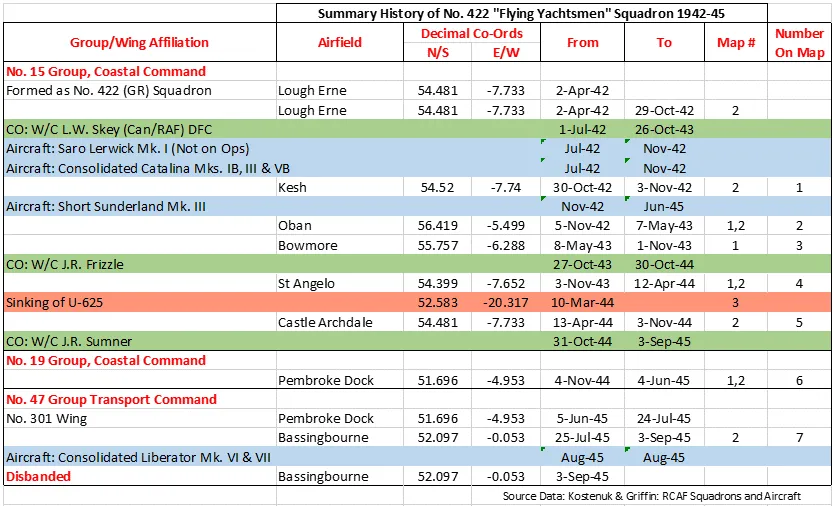
History of the Squadron Post-WWII (Aircraft: Sabre Mk. 2, 4, 5, 6, Starfighter, Huey, Kiowa)
The squadron was re-formed as a Fighter unit at Uplands (Ottawa), Ontario  on 1 January 1953 with Canadair Sabre aircraft, and joined No. 4 (Fighter) Wing at Baden-Soellingen, Germany
on 1 January 1953 with Canadair Sabre aircraft, and joined No. 4 (Fighter) Wing at Baden-Soellingen, Germany  in August. Its nickname was changed to "Tomahawk". Selected as one of eight Sabre units in No. 1 Air Division Europe to be re-equipped with CF-104 Starfighter aircraft for a nuclear strike role, it was deactivated on 15 April 1963 and reactivated as Strike Attack on 15 July. On 1 February 1968 the squadron was integrated into the Canadian Armed Forces. The squadron was deactivated in July, 1970. The squadron was reactivated as 422 Tactical Helicopter Squadron in January 1971, and remained a helicopter squadron until it was finally disbanded in August 1980.
in August. Its nickname was changed to "Tomahawk". Selected as one of eight Sabre units in No. 1 Air Division Europe to be re-equipped with CF-104 Starfighter aircraft for a nuclear strike role, it was deactivated on 15 April 1963 and reactivated as Strike Attack on 15 July. On 1 February 1968 the squadron was integrated into the Canadian Armed Forces. The squadron was deactivated in July, 1970. The squadron was reactivated as 422 Tactical Helicopter Squadron in January 1971, and remained a helicopter squadron until it was finally disbanded in August 1980.
 Canadian Virtual War Memorial
Canadian Virtual War Memorial